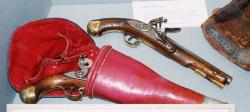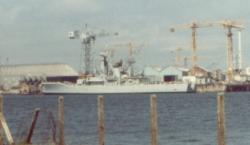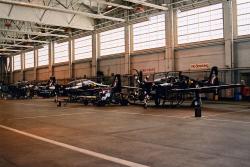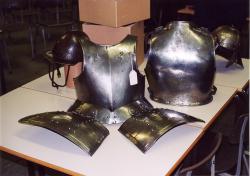Translate this Page
Jutland
Battle Name : Jutland
Date(s) : 31 May 1916 - 01 June 1916
Part of : First World War , Naval Operations ,
Outcome : An inconclusive engagement between British Grand Fleet and German High Seas Fleet
Summary
Admiral Scheer, to counter accusations of inactivity in the German Fleet, planned a raid along the Danish coast, hoping to draw the British Grand Fleet, or at least it's battle cruisers out of port into a U-boat trap he had laid for it. However radio intercepts had warned the Grand Fleet and Adm. Jellicoe was able to put to sea unmolested.
The lead battle cruisers squadrons of each fleet were first to collide, mid-afternoon of the 31st, when Adm. Beatty's accompanying Queen Elizabeth class battleships fell behind and his lead elements met the battle cruisers of Adm. Hipper. Better German gunnery, and poor armouring on the British vessels quickly sent the Indefatigable and Queen Mary to the bottom, with Lion, Tiger and Princess Royal badly damaged.
Soon the main fleets, with battleships and destroyer screens approached, and a battle of brute strength and manoeuvre began, with both fleets pounding each other with huge guns, and the British trying to get between the Germans and their home ports to cut them off. The British again came off worse, with the German fleet executing several tricky 180 degree 'turning away' manoeuvres with destroyer cover to escape the destruction of the British line (crossing the 'T') but Jellicoe did manage to get between them and safety.
After dark, Scheer managed to crash through the tail of the British fleet, with losses on both sides in confused, night-time encounters but by the early hours of June 1st, the virtually crippled German High Seas Fleet had regained safety, and Jellicoe was ordered home.
Claimed by Germany as a victory, and certainly the British had lost 3 battle cruisers, 3 cruisers and 8 destroyers, as against 1 pre-dreadnought, 1 battle cruiser, 4 light cruisers and 5 destroyers, the High Seas fleet was out of action for many months (and infact never put to sea again as a unit), leaving the British in control of the North Sea and able to enforce the blockade of Germany.
Also considered the last great fleet action, where two mass fleets 'slugged' it out, eye to eye.
Casualty figures
British Grand Fleet
- Number engaged :
- n/a
- Casualties :
- 6,784
German High Seas Fleet
- Number engaged :
- n/a
- Casualties :
- 3,039






